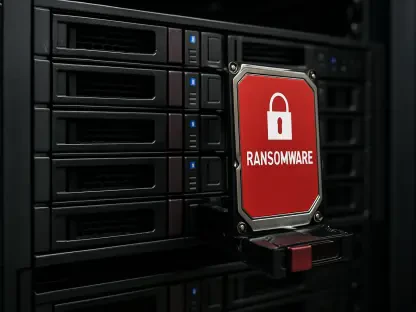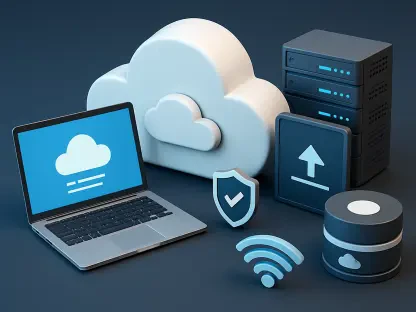Today, we’re thrilled to sit down with Maryanne Baines, a renowned authority in cloud technology. With her extensive experience evaluating cloud providers, their tech stacks, and product applications across various industries, Maryanne brings a wealth of insight to our discussion. In this interview, we dive into the capabilities of modern managed service provider (MSP) solutions, exploring how they streamline IT support, enhance endpoint security, and manage complex network environments. We’ll uncover the practical aspects of adopting such platforms, from setup to daily operations, and discuss the role of automation and advanced features in transforming service delivery for MSPs.
How do you see modern MSP solutions evolving to meet the needs of managed service providers in today’s cloud-centric landscape?
Modern MSP solutions are really stepping up to address the complexity of managing multiple clients in a cloud environment. They’re becoming all-in-one platforms that integrate professional service automation, endpoint security, and network monitoring. What stands out is their ability to handle multiple tenants through a single cloud portal, which is a game-changer for scalability. These solutions are also embedding advanced features like AI-driven support and automated workflows to reduce manual workloads and improve response times, aligning perfectly with the fast-paced, distributed nature of today’s IT ecosystems.
What are some key components that an MSP solution should offer to effectively support diverse customer environments?
At the core, an MSP solution needs a robust help desk system for ticketing and customer support, paired with endpoint management for security and updates. Network monitoring is another critical piece, ensuring visibility into servers and devices across different sites. The ability to integrate these components into a unified interface is vital, as it simplifies oversight. Additionally, features like asset discovery, mobile protection, and customizable access controls for technicians ensure that the solution can adapt to varied customer needs without overwhelming the provider.
Can you walk us through the initial experience of setting up a cloud-based MSP platform and what providers should expect during onboarding?
Setting up a cloud-based MSP platform is usually straightforward, especially with trial offerings. Typically, you start by creating an account online, which takes just a few minutes, and then you’re directed to a portal. There’s often no need for upfront payment details during a trial, which lowers the barrier to entry. From there, the focus shifts to configuring basic settings like customer profiles and user roles. The key is to have a clear plan for how you’ll structure your tenant data and access privileges from the get-go to avoid hiccups later.
How important is the user interface in an MSP platform, and what makes navigation intuitive for service providers?
The user interface is incredibly important because MSPs juggle so many tasks daily. An intuitive design with a clear home page that shows critical data—like ticket status, endpoint health, and system alerts—can save a lot of time. Easy-to-access menus for different modules, like help desk or network tools, also help. While some platforms might not yet offer customizable dashboards, having relevant information front and center in a logical layout ensures providers can quickly drill down into issues without getting lost in menus.
Let’s dive into help desk functionality. How does a well-designed help desk module enhance service delivery for MSPs?
A strong help desk module is the backbone of service delivery. It starts with setting up customers, sites, and technician roles, allowing for tailored access to specific data. The dashboard gives admins a comprehensive view of support requests, including SLA compliance, which helps prioritize urgent issues. For end users, self-service portals with access to knowledge bases reduce ticket volume by empowering them to solve simpler problems. Overall, it streamlines communication and ensures nothing slips through the cracks.
What impact does automation have on managing support processes within an MSP platform?
Automation is a lifesaver in managing support processes. It handles repetitive tasks like ticket routing or change management workflows, covering everything from planning to approval with predefined templates. AI tools can also analyze tickets and suggest solutions, cutting down resolution times. This not only boosts efficiency for technicians but also improves customer satisfaction since issues are addressed faster with less human error.
Shifting to endpoint security, what features do you think are essential for protecting client devices in an MSP solution?
Endpoint security in an MSP solution needs to cover a wide range of threats. Essential features include antivirus, vulnerability detection, and data loss prevention to safeguard sensitive information. Anti-ransomware capabilities with behavioral analysis and file backup options are also critical, especially given the rise in attacks. The ability to deploy agents across different operating systems like Windows, macOS, and Linux ensures broad coverage, though MSPs should be aware of potential gaps, like limited support for certain server OSes.
How does network monitoring contribute to the overall value of an MSP platform for service providers?
Network monitoring adds tremendous value by providing agentless discovery and real-time oversight of devices and servers. It can track resource utilization, monitor application performance, and even manage configurations to ensure compliance. Features like flow data analysis and remote management actions—starting or stopping virtual machines, for instance—give MSPs deep control. This level of visibility helps prevent downtime and ensures client networks run smoothly, which is often a top priority.
What challenges do you think MSPs face when adopting comprehensive platforms like these, and how can they overcome them?
One of the biggest challenges is the steep learning curve due to the sheer number of features and sometimes limited integration between modules. It’s not something you can fully deploy in a few days. MSPs can overcome this by starting with core components like the help desk and gradually expanding to other areas like endpoint security. Investing time in training and leveraging vendor support during onboarding also helps. A phased approach ensures they don’t get overwhelmed while still benefiting from the platform’s capabilities.
What is your forecast for the future of MSP solutions in the evolving cloud technology landscape?
I believe MSP solutions will continue to evolve toward even greater integration and automation. We’ll likely see more AI and machine learning embedded to predict and prevent issues before they occur. There’s also a push toward consolidating more standalone tools into unified platforms, making them even more comprehensive. As hybrid and multi-cloud environments grow, these solutions will need to offer seamless management across diverse infrastructures, with a strong focus on security and compliance to meet the demands of an increasingly complex digital world.









